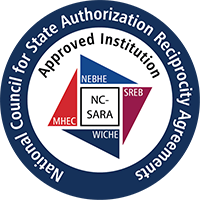How online learning works
Learning online at Jamestown Community College means that your instructors provide all instruction through an online platform. Like on-campus courses, online courses have specific start and end dates according to JCC’s academic calendar.
JCC instructors primarily deliver instruction and course content through our learning system, Brightspace. In Brightspace, you can access your online courses, syllabus, assignments, and grades. You may also participate in classroom discussions through written word forums and webinars.
For most online courses at JCC, you can log in 24 hours a day, seven days a week. Plan on several hours of work per week per credit hour. For a three-credit course, you should set aside 9-12 hours per week. You should also plan to interact in your course several times during the week.
Required hardware & software
The primary hardware needed for online courses are a computer with a reliable internet connection, access to your student account, and an up-to-date browser.
- We recommend a full-size computer (either PC or MAC) with a high speed, broadband, or DSL internet connection. We do not recommend dial-up connections for downloading and viewing rich media.
- Check the Brightspace supported browsers for desktop computers, tablets and mobile devices.
- Check the compatibility of your system with the SUNY system check.
Depending on the course, there may be additional hardware or software requirements. Check the course description and course syllabus, and ask your instructor if you have any questions.
NC-SARA
Jamestown Community College has been approved by New York state to participate in the National Council for State Authorization Reciprocity Agreements. NC-SARA is a voluntary, regional approach to state oversight of postsecondary distance education.
NC-SARA makes it easier for students to take online courses and transfer those credits from postsecondary institutions in other states by establishing national standards among member schools.

